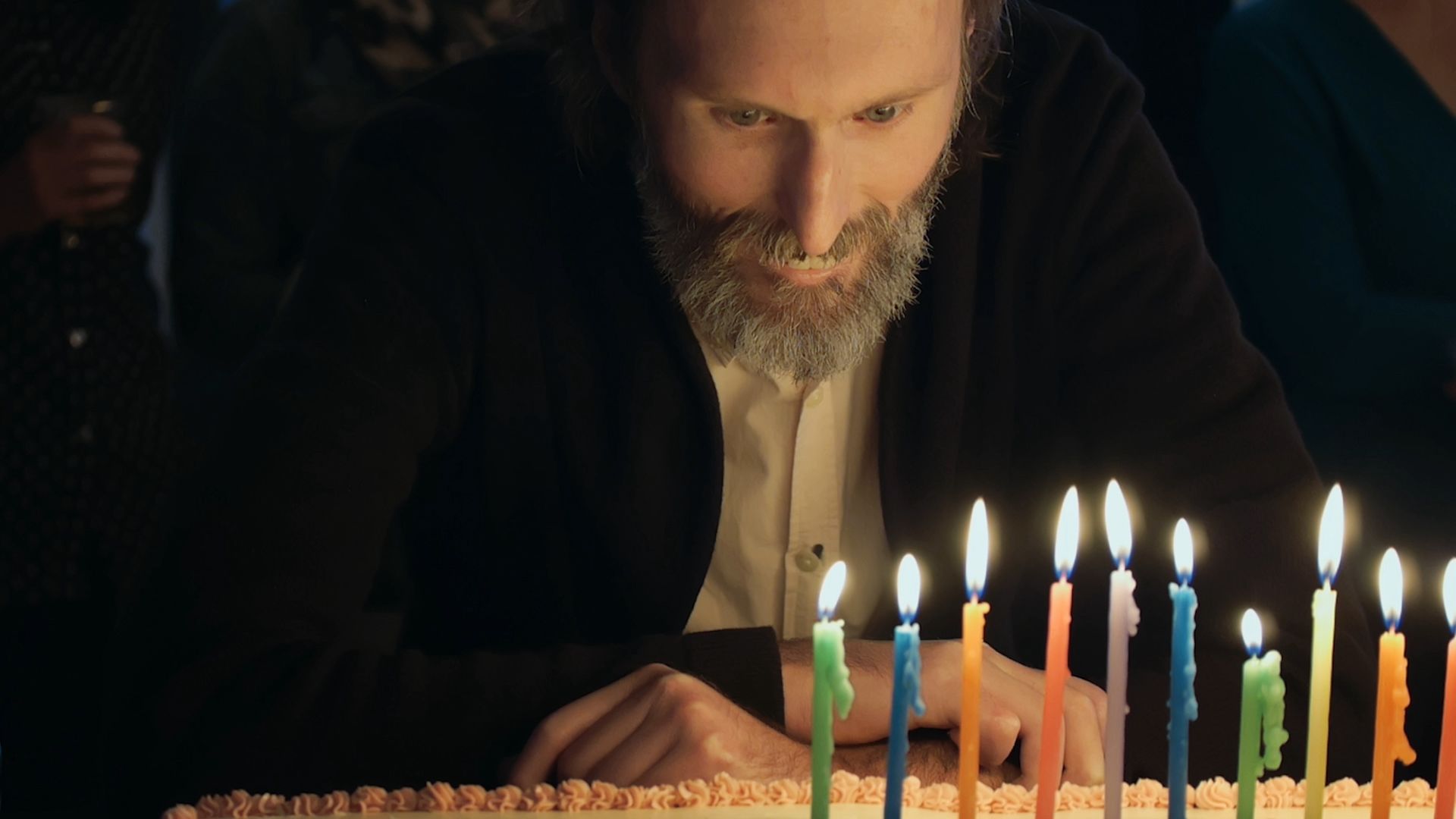A film-maker shares affliction and inspiration with Paul Klee

The new documentary Angel Applicant (2023) is a study in parallel lives and parallel fates.
A young designer stricken with a rare life-threatening condition learns that Paul Klee (1879-1940) died from the same ailment. Klee’s art becomes a bridge between the two of them, and an effective means of telling a delicately personal story.
The body of Ken August Meyer is the lived experience of this documentary that Meyer directed and narrates. Meyer felt his hands constricting, and found the skin on his face tightening, horror enough without comparing it to something he might have already seen in a movie.
Meyer is told that he has scleroderma, an auto-immune condition that begins with the degeneration of connective tissue—a chilling diagnosis. Not only did Klee suffer from the same condition, but he endured its pain as Nazis removed his “degenerate art” from museums. Klee, fearing worse, fled to Switzerland, hardly a welcoming place, even though he was born there.
While Ken Meyer learns about his condition, he studies Klee. His film, up to then a tactile introduction to the ordeal of scleroderma, with his own body as exhibit A, enters the imagination of an artist whom he sees as a kindred spirit.
“He’s not exactly a therapist,” Meyer says, “but he has firsthand experience with coping with this exact thing.”

A scene from Ken August Meyer’s Angel Applicant (2023) Jason Roark
In Klee’s painting Little Blue-Handed Man from 1938, which we’re shown as the film opens, an anxious figure looks down at a hand fused into a single form. What could have been a cartoon is an expression of real emotion. We get a sense of where Meyer is going here—a sense, because his film will deliver surprises among moments of fear and resilience.
Meyer tells us that strange symptoms first began with his hands, “which suddenly became cold and corpselike—then they suddenly puffed up, becoming hot and painful.” As his skin began to harden, his joints began to fuse, “leaving me with claws […] slowly changing knuckles into fingertips. What is happening to them is happening to my entire body.”
We see faces by Klee with large round eyes and rows of exposed teeth, typical for people with his condition. “Did he feel the same way I do, like the bearer of an unwanted disguise?” Meyer asks.
Somehow Meyer keeps going as the disease advances. Cinematographer Jason Roark follows him, observing his hands clench and his eyes bulge outward as his facial skin tightens. Roark seems to sense the limits of what the audience can endure, cutting away to a Klee figure when Meyer’s afflicted body becomes hard to watch. A visit to the operation when the cartilage in Meyer’s fingers is removed will still test any viewer.
Meyer’s own dark humour can lighten his most anxious moments. After a test of his lungs on his 40th birthday shows the function level of a 143-year-old man, Meyer orders a huge cake with 143 candles, and miraculously blows them all out, in front of his wife, daughter and friends.

A scene from Ken August Meyer’s Angel Applicant (2023) Jason Roark
In need of greater miracles, Meyer finds more in his bond with Klee, who made drawings of angels in his last years. With titles like Test of Endurance (1939), Forgetful Angel (1939) and When, Where, Wither (1940), those figures, drawn with ambiguity and wit (as Klee drew almost everything), have a softness and vulnerability. “They’re imperfect,” Meyer says. “For me they’re quite sceptical, but not without hope.”
Viewers can discover the film’s end for themselves, yet Meyer finds inspiration in Klee without making his work a roadmap, which wouldn’t have worked anyway. Klee’s inescapable humour (along with Meyer’s) and his humanity keep you with this story of affliction and keep the story from being what these accounts tend to be—chronicles of tense doctors’ visits, tearful families and beeping diagnostic machines.
In a film that shows us so much of what Klee produced (especially in his last years), Insula Dulcamara, painted on newsprint in 1938, stands out for its sheer size. In faint spring greens, blues and pinks and a coded landscape in thick black lines, it’s the island of Calypso from The Odyssey. For Meyer, it’s the hope that Klee found when everything around him negated it.
It doesn’t keep Meyer from restating a grim fact—more than two million people have some form of scleroderma.
Angel Applicant screens at the Doc NYC film festival, 8pm on 13 November, and online 14-26 November
Source link





